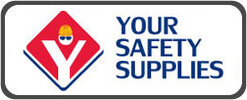Respiratory Safety Information
Frequently Asked Questions About SARS
(Severe Acute Respiratory Syndrome)
Information Courtesy of Center for Disease Control Website
THE SARS DISEASE
What is this disease called SARS?
A viral respiratory illness that was first reported in Asia in February 2003, is commonly known as Severe Acute Respiratory Syndrome (SARS. The World Health Organization (WHO) issued a global alert about SARS, in early March of 2003 . And during the next few months, the illness spread to more than two dozen countries in North America, South America, Europe, and Asia. The illness was considered contained when by late July of that year, no new cases were being reported. According to WHO, 8,098 people worldwide became sick with SARS during this outbreak and of these, 774 died. For more current information, check the WHO SARS Web site or visit other pages on CDC's SARS Web site.
What are the symptoms and signs of SARS?
The first sign of this illness begins with a high fever (measured temperature greater than 100.4°F or 38.0°C. Chills or other symptoms, including headache, general feeling of discomfort, and body aches, sometimes is associated with the fever. Some people also experience mild respiratory symptoms at the outset. Diarrhea is seen in approximately 10 percent to 20 percent of patients.
SARS patients may develop a dry, nonproductive cough after 2 to 7 days, that might be accompanied by or progress to a condition known as (hypoxia) in which insufficient oxygen is getting to the blood. In 10 percent to 20 percent of cases, patients require mechanical ventilation. Most patients develop pneumonia. For more information, see the MMWR dispatch that describes the clinical features of SARS.
What are some of the causes of SARS?
Though it is believed that SARS is caused by a previously unrecognized coronavirus, called SARS-associated coronavirus (SARS-CoV), it is also possible that other infectious agents might have a role in some cases of SARS.
What causes SARS to spread?
Close person-to-person contact seems to be the primary way that SARS appears to spread. The virus that
causes SARS is thought to be transmitted most readily by respiratory droplets (droplet spread) This droplet seems to be produced when an infected person coughs or sneezes. Droplet spread can happen when droplets from the cough or sneeze of an infected person are propelled a short distance (generally up to 3 feet) through the air and deposited on the mucous membranes of the mouth, nose, or eyes of persons who are nearby. When a person touches a surface or object contaminated with infectious droplets and then touches his or her mouth, nose, or eye(s) is another way in which the virus seems to spread. It is also possible that SARS-CoV might be spread more broadly through the air (airborne spread) or by other ways that are not yet known.
How is “close contact” defined in the context of the SARS outbreak?
The CDC SARS case defines close contact as having cared for or lived with a person known to have SARS or having a high likelihood of direct contact with respiratory secretions and/or body fluids of a patient known to have SARS.
Some examples also include kissing or embracing, sharing eating or drinking utensils, close conversation (within 3 feet), physical examination, and any other direct physical contact between people. However the term close contact does not include activities such as walking by a person or sitting across a waiting room or office for a brief time.
After being exposed to SARS, how long would it take for a person to become sick?
The “incubation period.” Is the time between exposure to the SARS virus and onset of symptoms. The incubation period for SARS is typically 2 to 7 days, although in some cases it may be as long as 10 days.
How long is a person with SARS infectious to others?
People with SARS are most likely to be infectious only when they have symptoms, such as fever or cough, according to available information. But, as a precaution against spreading the disease, CDC recommends that people with SARS limit their interactions outside the home until 10 days after their symptoms have gone away (for example, by not going to work or to school). Patients are most infectious during the second week of illness.
Can people who have recovered from SARS become sick again or relapse?
At the time of this writing, we do not have a full understanding of the natural course of illness in persons infected with SARS-CoV. However it is important to learn what factors might influence illness progression and recovery. Some of the factors that could be related to the virus itself could be, how the body's immune system reacts to the virus, how infection with the virus is treated, or other possibilities. CDC and other scientists are trying to learn the answers to these important questions.
What are the recommendations for medical treatment for patients with SARS?
CDC recommends that patients with SARS receive the same treatment that would be used for any patient with serious community-acquired atypical pneumonia. SARS-CoV is being tested against various antiviral drugs to see if an effective treatment can be found.
